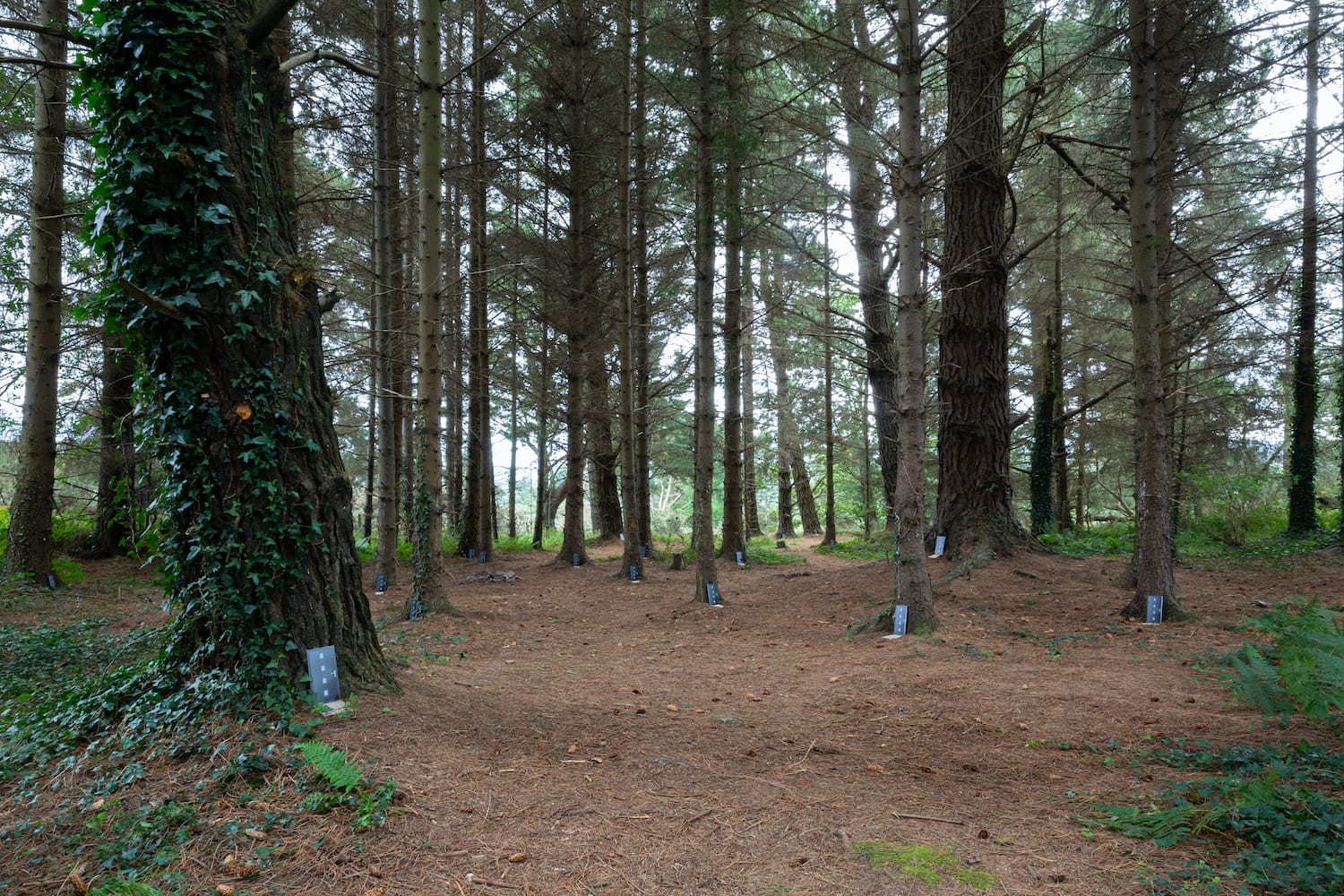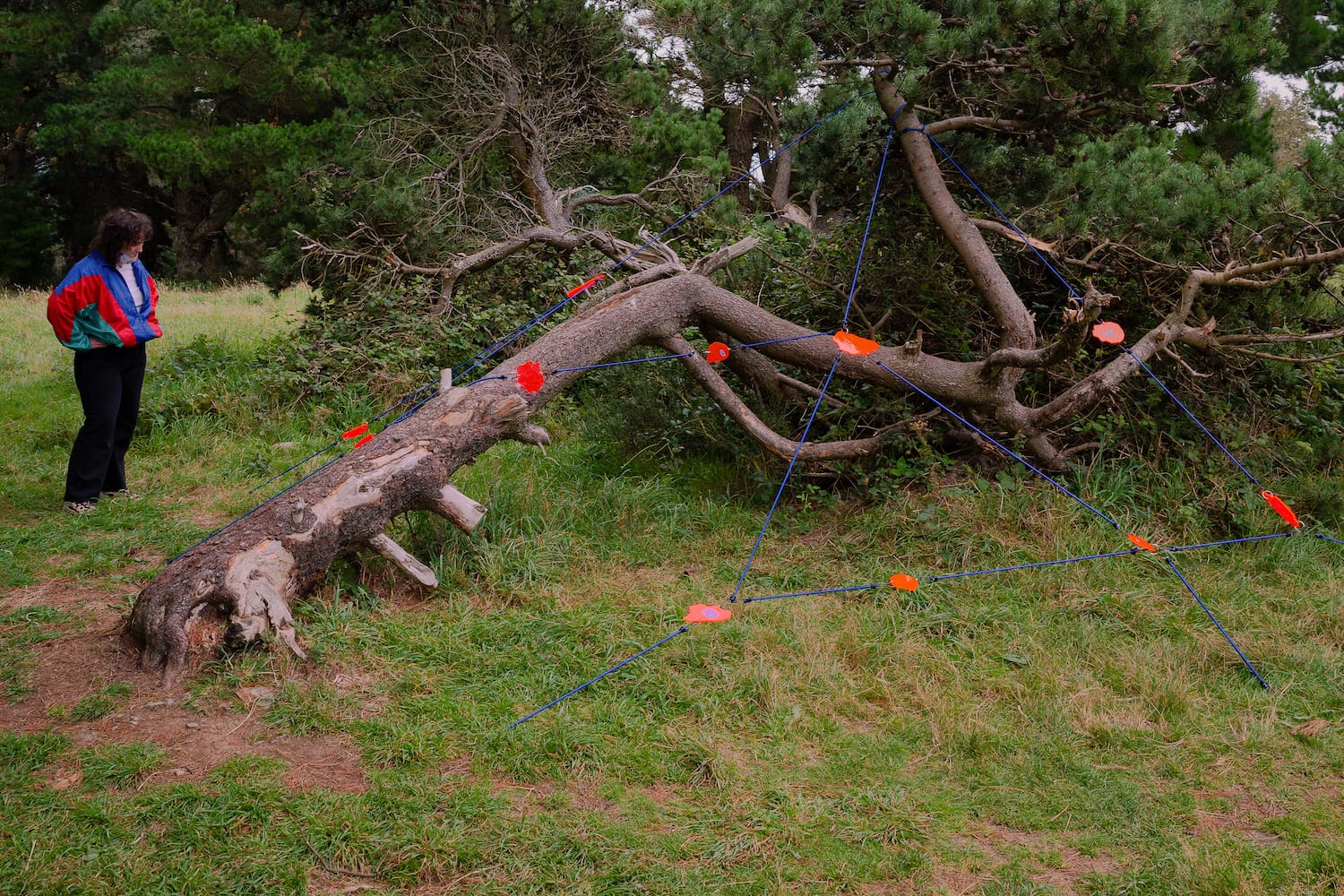Minister plans to make it much tougher for Ukrainian refugees to become Irish citizens
Andrii Stepanov says some people don’t want to return to what was once their home, and is now Russian territory. “Why are they pushing us to Russia?”
The pandemic nixed their traditional end-of-studies exhibitions, so a group of artists set up their own show, the Crux Project, in the wilds of south Dublin.

From the clearing of Rathmichael ring fort, Dianne Murphy could see all of Dublin.
At the foot of the drop were the cranes of the Cherrywood development site. At the edge of the clearing was a circle of trees.
She had a thought, she says: “What if I was a developer myself and I gentrified the ring fort? So that’s what I did.”
Murphy and seven other graduate artists had last September trekked up to the ring fort at the foot of the Dublin Mountains, to scout it out as a location for an art exhibition they wanted to put on.
Like other art graduates, the pandemic had deprived them of their shot at an end-of-studies exhibition, a rite of passage that would have given them the chance to mingle with those in the professional art world.
“We thought, ‘Why not just do it outside?’” says Luke van Gelderen, one of the artists who came up with the idea of Crux Project, as they called the exhibition.
It was supposed to be open-air and public, but with changed restrictions they dropped that idea and documented what they put up instead.
On Monday, the documented version of the exhibition went live, at cruxproject.net. “It’s an extension of the exhibition,” says Murphy.
For her gentrified ring fort, Murphy printed images of grey modern front doors on small PVC rectangles.
She put each little door at the foot of the trunk of a tree. She even had little driveways made from bird grit stuck onto wood, she said.
Her co-living development was marketed to the fairies of the ring fort, she says. The developer was Aos Sí meaning “fairy folk” with the tagline “dream living”.

Because developments are selling a dream, says Murphy. “They’ll come in thinking they’ll make it better, but they don’t do anything to help the area.”
“They just paint over a problem and not improve it. So it’s a bit of a fairy tale in itself,” says Murphy.
Fairy doors in forests are a hidden tradition, says Murphy. “The idea is that, if you put down a fairy door, you can’t see in, because it’s the fairy world.”
It was Luke van Gelderen’s idea to host the Crux Project exhibition at the ring fort.
The ring fort is close to the “encroaching, techno-suburbia” of Cherrywood, at “the intersection between paganism and modernity”, he says.
In his work, he dangled photos from trees using bungee cords, images of bell-mouth spillways, which drain overflow water into a large hole in the surface of a lake, printed onto vinyl material.
These rotating objects represent the connection between people and the online networks they regularly engage with, says van Gelderen.
Engaging with an algorithm creates a continuous feedback loop, he says. “You’re constantly being faced with an iteration of yourself. Like a spillway, it is a recurring image.”
He’s questioned his own autonomy while using the internet since he was quite young, he says. “You live a big portion of your life online, and then, a third party company has control over that.”
“I just think the time we live in is kind of scary,” says Van Gelderen, who was the 2020 recipient of Ormond Art Studios’ Graduate Residency Award.
Because the show was outdoors, Frances Hennigan had to drop her go-to medium of painting with egg tempera.
“I had to rethink the materials. But I think it adds strength to your work to have to do that,” she says.
She came up with a spider web of bungee cords and petri-dish symbols that forced those who happened upon the art work to lean in close.
At one point, some kids who were headed up the mountain with their parents ran over to her blue and red sculpture and grabbed and pulled at it, she says. “I was happy people were puzzled about it.”
One of the kids said that it wasn’t art, says Hennigan, and she likes that “you might not interpret it or might not know exactly what it is”.

All the artists involved made sure to use durable materials and not to leave any lasting trace, says Hennigan.
Exhibiting outdoors was a challenge for digital artists, since there were no plug sockets at the ring fort, says Lana May Fleming, who normally exhibits her work through video.
Fleming built flesh-like sculptures that could hold an iPad, which showed video of herself covered in sticky or liquid substances, she says, to explore the usage of terms relating to food to describe and sexualise women.
The mounds were built with liquid latex, and were painted pink and covered in baby oil, says Fleming. “I wanted it to look like human flesh grown in a lab.”
None of the artists were used to hanging their art outside, said Fleming. “We had to look for irregular ways of hanging stuff. Waterproof was key.”
Murphy’s doors were hard to install without causing any damage, says Hennigan. “She didn’t want them to fall over but didn’t want to glue them to a tree either.”
But Hennigan says the experience has shown them the possibility of outdoor exhibitions. “I think it will stand to us in the future and make us really strong.”
Most of the artists graduated in November 2020 from the Institute of Art, Design and Technology (IADT) in Dún Laoghaire.
Missing their graduation show was a huge loss, says Murphy, making it harder for them to connect up with the professional art world.
Says van Gelderen: “The degree show is usually your springboard into your professional career. We’d been basically at a bit of a loss, with not having it.”
“Immediately after graduating, there was this urgency to self-generate opportunities autonomously,” he says.
Fleming says that coming together as a group was hugely beneficial because of how removed they felt from the art world.
The group became friends through a society in IADT, visiting exhibitions together around Dublin.
They hope to continue creating work together, says Murphy. “We’re a really great group together. We’re good for critiquing each other’s work.”
“Momentum is so important,” says Hennigan. “That’s why we wanted to form a community. To hold ourselves to critique, to help each other out, to borrow materials from each other.”
“It’s that exact support and community that enables us to make work. Otherwise we wouldn’t have been able to make it happen,” she says.